At the end of 2020 I released my HO model of the Baldwin DT6-6-2000, you can find the post here. But that wasn’t the end of the journey because just as Baldwin updated the DT6-6-2000 to the RT-624, so am I.
The Baldwin RT-624 is the natural development of the Baldwin DT6-6-2000. Built between 1951 and 1954 the locomotive is classed as a transfer unit, designed for moving strings of freight cars between local yards in big cities. It was a heavy locomotive, giving it great traction, and it had, for its time, a lot of horsepower. Baldwin had started changing their naming convention for locomotives by this stage; this locomotive was sometimes called a DT6-6-2400 but Baldwin’s correct name was RT-624. RT stands for ‘Road Transfer’, 624 stands for 6 wheels per truck and 2400 horsepower. To achieve the extra 400 horsepower upgrade from the predecessor’s 2000 horsepower, Baldwin replaced the pair of 606SC supercharged diesel engines with their newer 606A supercharged diesel engines. These each produced 1200 horsepower and were more reliable.
The RT-624 is very similar to the DT6-6-2000 and at first glance, you could be mistaken in thinking they were the same locomotive. Apart from things which you can’t see, such as the larger engine size in the RT-624, there are many differences. Below is my original model in N Scale of the DT6-6-2000.
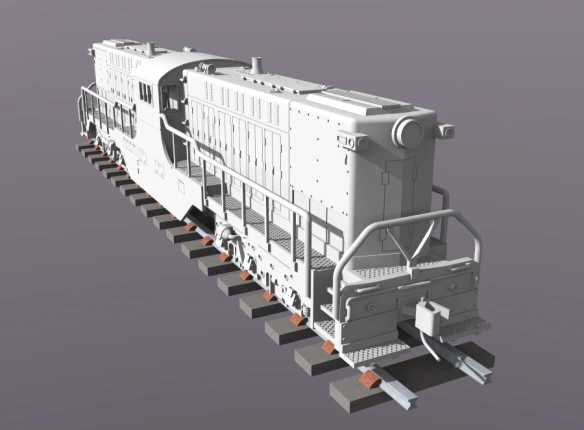
Next we have the RT-624, again in N Scale.
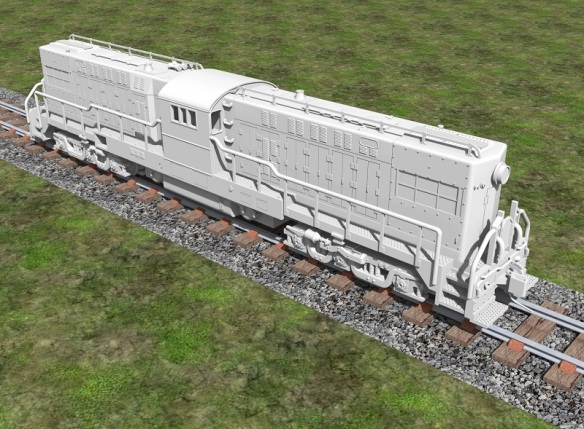
The first thing that stands out to me is the large section under the cab that covers the fuel tank; on the RT-624 this has been removed. I assume Baldwin did this for ease of maintenance rather than cosmetic looks. Next, at the ends of the locomotive, Baldwin introduced a fold-down walkway to allow crews to pass between locomotives that were coupled together working as MU (multiple units). This split the end handrail as well as adding pipework for the MU equipment.
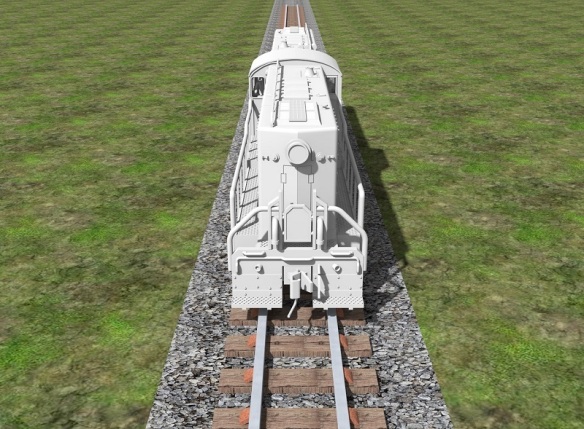
The trucks on some of the RT-624 locomotives were also upgraded to Outside Equalized trucks from the original Commonwealth trucks. Out of the twenty-four RT-624s made, twenty-three went to the Pennsylvania Railroad, and only the last eight, built-in 1952 and numbered 8724-8731, had the new tucks.

Another difference from the DT6-6-2000 was the walkways on the side. The DT6-6-2000 was almost symmetrical but the RT-624 had one walkway that was a different shape from the rest. This one had a longer raised section allowing for more battery storage under the walkway, which you can see on the left in the image below.
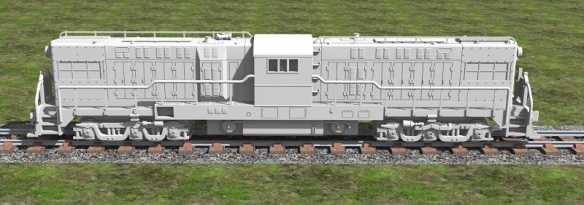
Another visual change that only appeared on some of the Pennsylvania Railroad locomotives was the Trainphone antenna on the roof. I say some of the locomotives because in doing my research I’ve found images of the locomotives with and without the antenna. The Trainphone system was started in 1945 and was phased out around 1967 so it may be that it’d been removed from some of the locomotives. Below is a good example, PRR 8730 (one of the last batch with the Outside Equalized trucks) is shown with no Trainphone antenna. This photo was taken by Michael Sirotta at Frankford Jct., North Phila. It’s a 35 mm slide photo and dates from 1965 or ’66. (The image came from www.railpictures.net/)
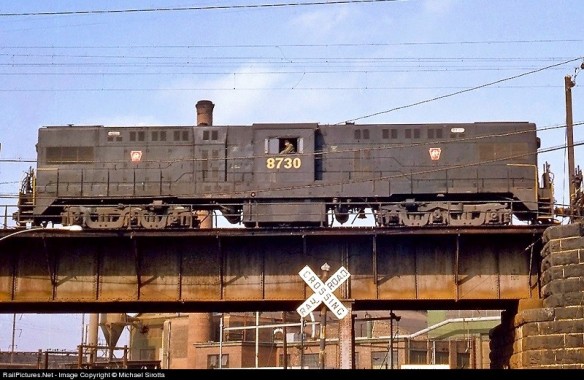
The main body also had many small changes such as different grill positionings, headlight configuration, number board locations, and horn types.
The good news, as with my N Scale version, the donor chassis for both HO DT6-6-2000 and RT-624 kits will be the same. All the differences will be on the 3D Printed or etched brass parts.
I’ll be making shells available for versions with and without the Trainphone antenna for the PPR. I hadn’t planned on making 3D printed replacement trucks as Bowser makes both the Outside Equalized and Commonwealth trucks, but if they become hard to get hold of please let me know.
Out of the twenty four RT-624s made only one didn’t go to the RRP; this went to the Minneapolis Northfield & Southern and was numbered Twenty Five. Researching this locomotive, I noted that a lot of the changes above had not been included. As far as I can see, the only changes between MN&S’s original 5 DT6-6-2000’s and their only RT-624 was a different position to the headlight and a raised grill on the nose side. The large plate under the cab covering the fuel tank was already omitted on their DT6-6-2000’s. So for that model alone, if anybody would like one, I can simply modify the Baldwin DT6-6-2000 HO Type 3 model I already sell, so please get in touch.
I’ve already started working on the HO model and will have some progress images ready to share with you soon as well as a rendering of the model I’ll be sending for a test print.

You must be logged in to post a comment.